Nose piercing is not new, as it is an ancient practice. It has evolved over the years and gained prominence in the fashion world. This form of body art symbolises beauty, and you can choose the best type that reflects your style. So, what should you know before you get one?
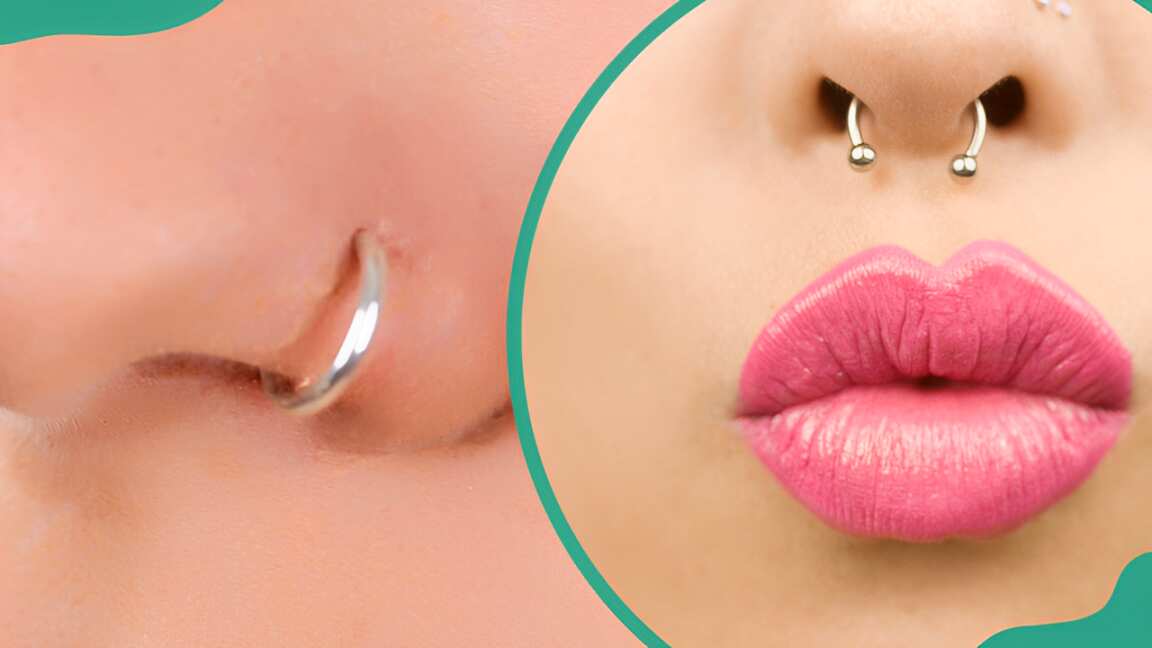
TABLE OF CONTENTS
Today, nose piercing is a popular form of self-expression. However, before deciding to have one, it is proper to understand a few things about the different types, aftercare tips, and potential risks. Importantly, it is a delicate procedure that an expert should handle to avoid complications.
What is nose piercing?
Nose piercing involves piercing the soft cartilage or the skin outside your nose. Any part of the nose can be pierced depending on its structure. Knowing where you want the placement to be is essential. Therefore, let your piercer put a mark on the spot so that you can confirm it is the right place you want the piercing before it is done.

Read also
30 trendiest teen boy haircuts you definitely have to try
The meanings of nose piercings may vary from one person to another. People opt for nose piercings for different reasons. Most get them done for self-expression so that they can wear their favourite jewellery. In some communities, nose piercings symbolise social status, rite of passage, or religious belief.
Nose piercing types
There are different types of nose piercings, and it is crucial to differentiate them to determine the one that suits you the best. Here are the various types you should be conversant with.
1. Nostril piercing

This is the most common type of nose piercing, which involves puncturing the nostril's outer part. Depending on your preference, the piercing can be on the left or right side of the nose. It is less complex and recommended for beginners.
2. Bridge piercing
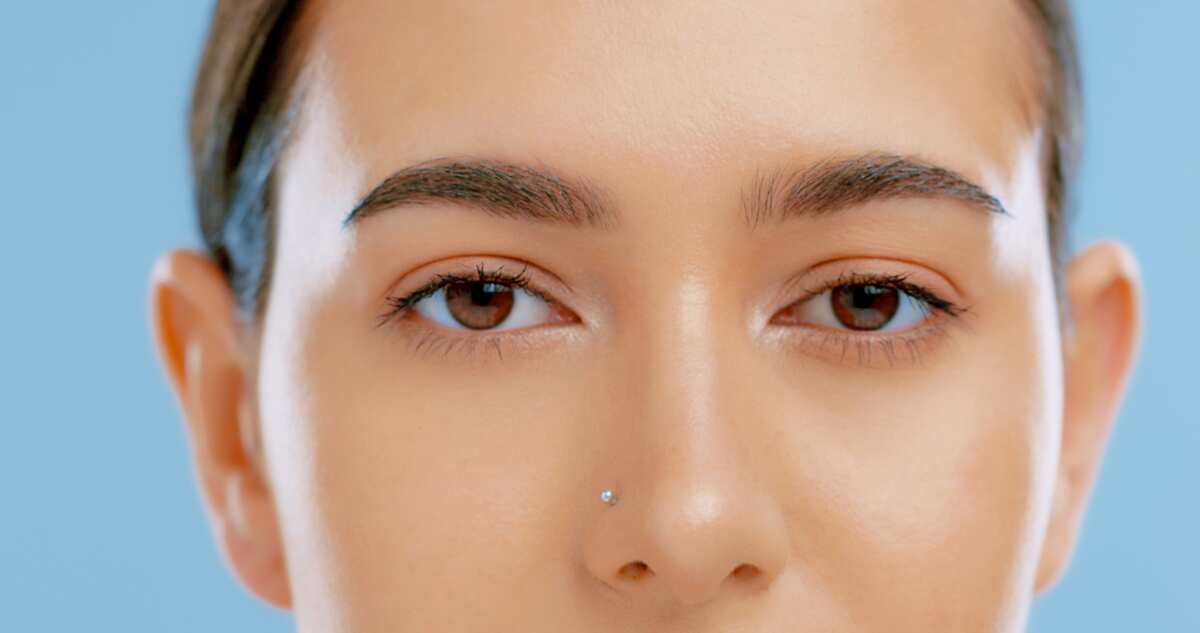
This facial piercing goes through the bridge of the nose horizontally between the eyes. It is also called earl or erl piercing and can be done for cultural, spiritual, or decorative purposes.

Read also
30 coolest ideas for leg tattoos for men and women
3. Septum piercing
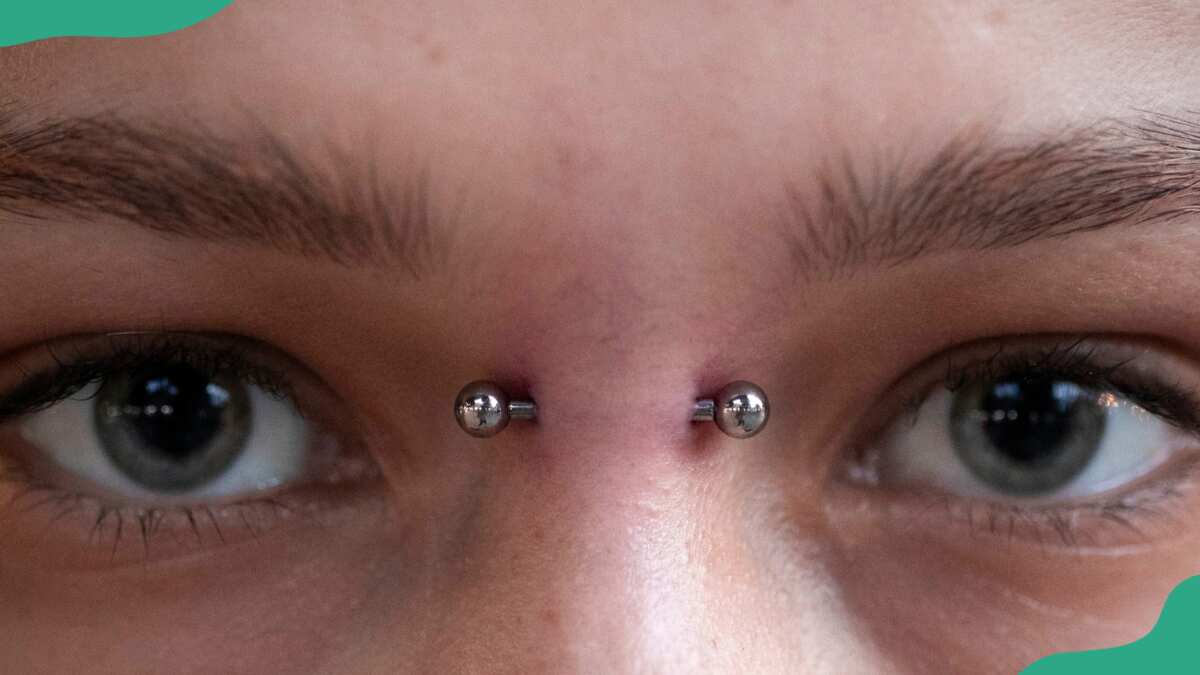
Usually, septum piercing goes through the septum, the thin cartilage wall separating your right and left nostrils. The septum is sometimes referred to as the sweet spot. It is a perfect spot for showing a front-facing statement hoop or a simple clicker hoop.
4. Nasallang piercing
This piercing, also known as a tri-nasal piercing, involves piercing through the right nostril, septum, and left nostril using a single bar. The hole through the nose can be on the lower or upper part, leading to two piercing variants.
5. Septril piercing

This type of nose piercing is located at the bottom of the tip of the nose. It targets the stretched septum, which is pierced between the two nostrils.
6. Vertical nose tip piercing

Vertical nose tip piercing, also known as rhino piercing, involves piercing the tip of your nose on the top part and exiting through the lower side of the nose tip. A curved barbell is placed through the hole, with both ends outside the nose.
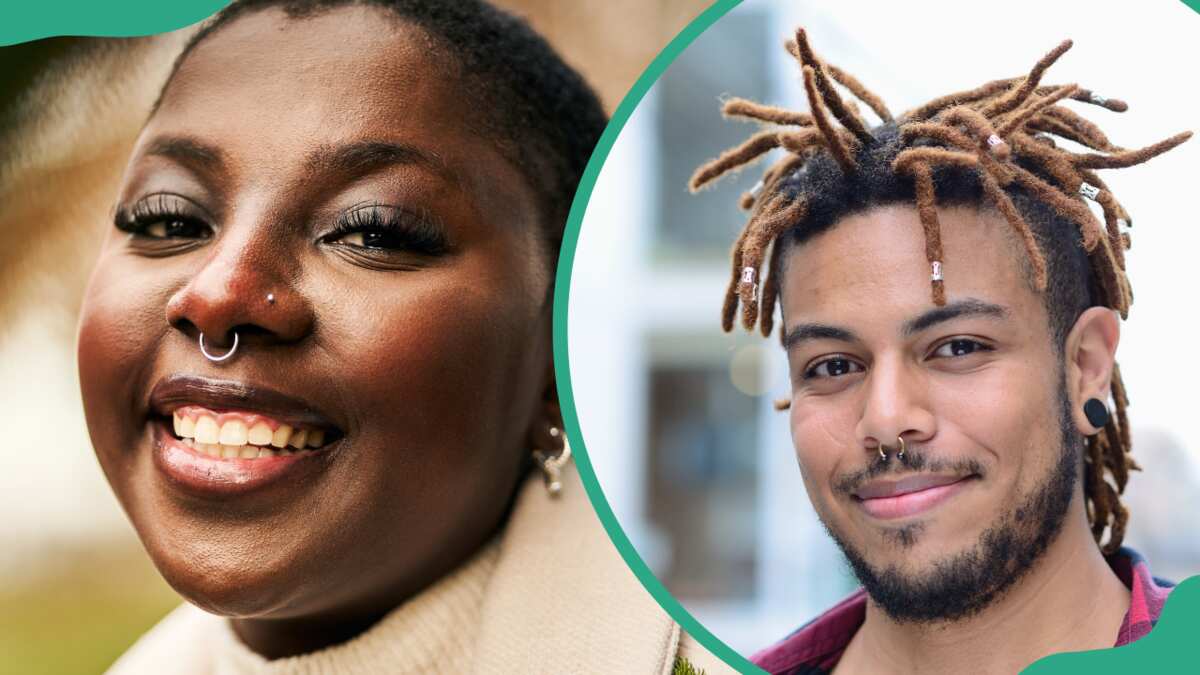
Read also
Is a septum piercing painful? Here is all you need to know about getting one
Nose piercings jewellery
You can choose from a wide range of nose-piercing jewellery. However, you should consider the material, size, and your taste. Below are the most popular nose piercing jewellery.
- Studs – These are the most commonly used jewellery, especially among first-timers. They are highly preferred because they are comfortable and secure. They can be L-shaped, screw, and bone.
- Hoops – These are usually circular and come in varied thicknesses and diameters. Captive Bead Rings (CBR) are the most preferred hoops as they are held in position by the ring’s tension.
- Nose piercing ring – This is the most popular nose jewellery. It is affordable and comes in different sizes and shapes.
- Nostril screws and fishtail – This type of jewellery is best used after the piercing has completely healed.
Nose piercing aftercare tips
How fast your nose piercing heals determines how well you care for it. Improper care may cause complications, such as infections, severely affecting the wound. Importantly, you should adhere to the aftercare instructions provided by your professional nose piercer. Here are some of the dos and don’ts of nose piercing aftercare.
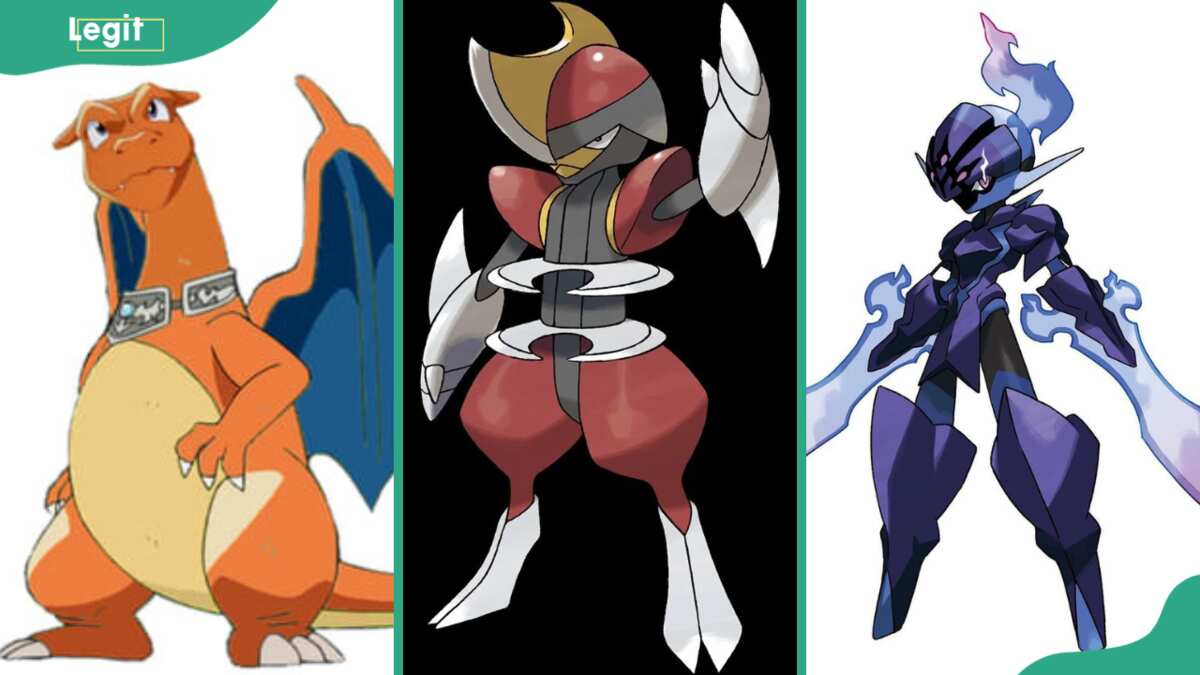
Read also
33 coolest Pokémon ever: best-looking designs that catch the eye
- Avoid touching or twisting the jewellery unnecessarily. Frequently touching the wound may cause a piercing infection.
- Do not use harsh chemicals on the wound. Substances such as alcohol, hydrogen peroxide, and skin ointments may irritate.
- Do not use make-up.
- Do not change the jewellery before the piercing heals.
- Handle the place gently, as trauma may cause more injuries.
- Occasionally clean the place using clean, warm water.
- Eat a healthy diet to help heal fast.
- Use clean bedding, especially pillows, to prevent infections.
What are the disadvantages of nose piercing?
Like other body piercings, nose piercings involve some risks. Here are some of the likely side effects of nose piercing.
- Scabbing around the piercing: A dry crust may form near the wound and sometimes ooze yellow or green discharge. If this happens, it is recommended that you seek help from a medical professional.
- Infections and allergic reactions: Depending on your skin type, you may experience allergic reactions. They could be mild, but if they are severe, it is advisable to seek help from a dermatologist.
- Pain: It is expected to experience a mild discomfort and bleeding after a nose piercing. People have varying pain tolerance, and if you feel that the pain is extreme, you should seek a medical professional for help.
- Keloids: Kelod is a permanent scar that forms around the area of the wound. In its early stage, it appears as a pink or purple nodule.

Read also
What are the different aesthetics popular with today’s youth?
Which is the correct side to pierce your nose?
You can get a piercing on any side of your nose. There is no right or wrong side to a nose piercing; it all depends on your preference.
What do I need to know before getting a nose piercing?
You should seek professional consultation to understand the process, aftercare, and potential risks. You should also choose the right type of nose piercing and jewellery. Notably, the procedure should be performed by an expert.
What is nose piercing healing time?
There are different types of nose piercings, and their healing times vary. Delicate parts of the nose may take longer to heal. However, the maximum healing period is approximately two to three months.
How painful is a nose piercing?
People have different pain tolerances and, therefore, will feel varying degrees of pain when getting their nose pierced. Additionally, various parts of the nose have varying sensitivity, and the pain intensity during piercing depends on what part of the nose is punctured.

Read also
What is coconut: a fruit, a nut, a seed, a vegetable, or a legume?
Nose piercing is one of the most popular forms of body art. While some people use it to express themselves, it is a cultural practice for others. Interestingly, you can choose from different types of nose piercings to suit your preferences. Regardless of the purpose of having a nose piercing, it is essential to get it done by a professional to avoid complications and infections.
Legit.ng recently published a compilation of the latest African fashion dresses for ladies. Ladies love fashion and will always watch the latest trends in the fashion world. African fashion dresses are gaining popularity quickly, and you can choose from the many available materials and designs.
African fashion dresses are known for their colourfulness and versatility. They come in different fabrics, including Ankara and Kente. Find out which fashion styles are suitable for various occasions.
Source: Legit.ng
ncG1vNJzZmivp6x7rbHGoqtnppdkrrS3jKWcoKGkZLOiv8eipqdlo6nGrbGOamxya2Zsf266zqycZqiZmr%2Bktc2gZGpoYWLEqa3TZrCorV2ku6Z7